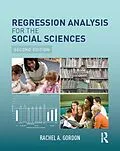Provides graduate students in the social sciences with the basic skills they need to estimate, interpret, present, and publish basic regression models using contemporary standards.
Key features of the book include:
.interweaving the teaching of statistical concepts with examples developed for the course from publicly-available social science data or drawn from the literature.
.thorough integration of teaching statistical theory with teaching data processing and analysis.
.teaching of Stata and use of chapter exercises in which students practice programming and interpretation on the same data set. A separate set of exercises allows students to select a data set to apply the concepts learned in each chapter to a research question of interest to them, all updated for this edition.
Autorentext
Rachel A. Gordon is Professor in the Department of Sociology and Associate Director of the Institute of Government and Public Affairs at the University of Illinois at Chicago. Professor Gordon has multidisciplinary substantive and statistical training and a passion for understanding and teaching applied statistics.
Inhalt
I: GETTING STARTED 1. Examples of Social Science Research Using Regression Analysis 2. Planning a Quantitative Research Project with Existing Data 3. Basic Features of Statistical Packages and Data Documentation 4. Basics of Writing Batch Programs with Statistical Packages II: THE REGRESSION MODEL 5. Basic Concepts of Bivariate Regression 6. Basic Concepts of Multiple Regression 7. Dummy Variables 8. Interactions 9. Nonlinear Relationships 10. Indirect Effects and Omitted Variable Bias 11. Outliers, Heteroskedasticity, and Multicollinearity III: WRAPPING UP 12. Putting It All Together and Thinking about Where to Go Next
